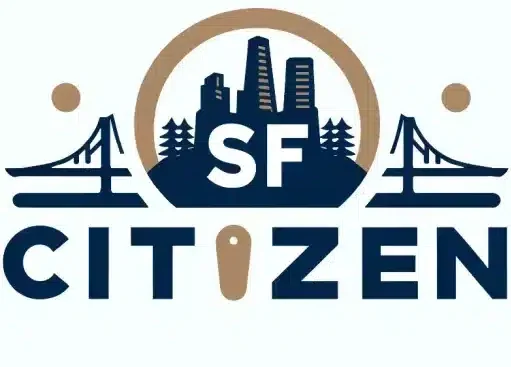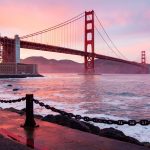U.S. Route 101, stretching over 1,500 miles along the West Coast, serves as a vital artery connecting the diverse regions of California, from the bustling streets of Los Angeles to the scenic views of the Pacific Coast and the technological hub of Silicon Valley. This iconic highway, known by various names such as El Camino Real, Pacific Coast Highway, and the Redwood Highway, plays a crucial role in the state’s transportation network, particularly in the vibrant city of San Francisco.
In This Article
Key Points
- U.S. Route 101 has evolved from a simple road to a major highway system, with various names reflecting its historical and regional significance.
- The highway connects major cities, including San Francisco, and has a significant impact on local and interstate travel.
- The cultural divide between Northern and Southern California is reflected in the highway naming conventions, with “101” used in the north and “the 101” in the south.
U.S. Route 101: A Path Through California’s Heart
The Historical Significance of U.S. Route 101
U.S. Route 101, originally designated as El Camino Real, has a rich history dating back to the early 20th century. Over the years, the highway has undergone significant transformations, from a simple road to a major freeway system, including the construction of iconic bridges and the expansion of the route to accommodate growing traffic demands.
U.S. Route 101 in San Francisco: The Bayshore Freeway
In San Francisco, U.S. Route 101 is known as the Bayshore Freeway, a critical stretch of the highway that connects the city to other parts of the Bay Area. The Bayshore Freeway provides access to major landmarks, such as the San Francisco International Airport, and intersects with other important roads and bridges, including the San Mateo-Hayward Bridge.
Connecting North to South: From the Redwood Highway to the Ventura Freeway
As U.S. Route 101 traverses the state from north to south, it takes on different names and characteristics. In Northern California, the highway is known as the Redwood Highway, winding through the dense forests and coastal landscapes of the region. As it moves southward, U.S. Route 101 becomes the Ventura Freeway and the Hollywood Freeway, navigating through the urban sprawl of Southern California.
The Cultural Divide: Highway Naming Conventions
One interesting aspect of U.S. Route 101 is the sociolinguistic difference in how people refer to the highway in Northern and Southern California. In the north, it is simply called “101,” while in the south, it is commonly referred to as “the 101”. This cultural divide reflects the distinct regional identities within the state.
The Role of U.S. Route 101 in Public Transportation and Regional Connectivity
U.S. Route 101 and Public Transportation Networks
U.S. Route 101 plays a vital role in supporting public transportation systems in San Francisco and other cities along its path. The highway connects with major transit hubs, such as BART stations and bus terminals, facilitating the movement of people throughout the region.
Major Roads and Bridges Connected by U.S. Route 101
- The Golden Gate Bridge, an iconic symbol of San Francisco, is accessible via U.S. Route 101.
- The San Mateo-Hayward Bridge, which spans the San Francisco Bay, intersects with U.S. Route 101, connecting the East Bay with the Peninsula.
U.S. Route 101’s Impact on Regional Development
The presence of U.S. Route 101 has significantly influenced the development of the regions it connects. For example, the highway has played a crucial role in the growth of Silicon Valley, providing access to the area’s numerous tech companies and startups. Additionally, U.S. Route 101 has contributed to the economic development of San Mateo County and other communities along its route.
U.S. Route 101 as a National Scenic Byway and Coastal Route
The Pacific Coast Highway and National Scenic Byway Designation
Portions of U.S. Route 101, particularly along the coast, are designated as part of the Pacific Coast Highway and have been recognized as a National Scenic Byway. These sections offer breathtaking views of the Pacific Ocean and showcase the natural beauty of California’s coastline.
Exploring the Natural Beauty Along U.S. Route 101
- Richardson Grove State Park, located along U.S. Route 101 in Northern California, is home to towering redwood trees and provides a stunning backdrop for scenic drives.
- The Oregon Coast Highway, which is a continuation of U.S. Route 101 beyond California’s northern border, offers picturesque coastal vistas and access to numerous state parks and beaches.
U.S. Route 101’s Role in Promoting Tourism and Recreation
U.S. Route 101 serves as a gateway to many popular tourist destinations and recreational activities along the West Coast. The highway provides access to numerous state parks, beaches, and scenic overlooks, attracting visitors from around the world who come to experience the natural beauty and cultural attractions of California.
FAQ
What is the historical significance of U.S. Route 101 in California?
U.S. Route 101 has a rich history dating back to the early 20th century, originally designated as El Camino Real. The highway has undergone significant transformations over the years, evolving from a simple road to a major freeway system.
How does U.S. Route 101 impact public transportation in San Francisco?
U.S. Route 101 supports public transportation systems in San Francisco by connecting with major transit hubs, such as BART stations and bus terminals. This facilitates the movement of people throughout the region.
What are some major landmarks along U.S. Route 101 in San Francisco?
The Golden Gate Bridge, an iconic symbol of San Francisco, is accessible via U.S. Route 101. The highway also intersects with the San Mateo-Hayward Bridge, which connects the East Bay with the Peninsula.
Why is U.S. Route 101 referred to differently in Northern and Southern California?
The cultural divide between Northern and Southern California is reflected in the highway naming conventions. In the north, it is simply called “101,” while in the south, it is commonly referred to as “the 101”.
How does U.S. Route 101 contribute to tourism and recreation on the West Coast?
U.S. Route 101 serves as a gateway to many popular tourist destinations and recreational activities along the West Coast. The highway provides access to numerous state parks, beaches, and scenic overlooks, attracting visitors who come to experience the natural beauty and cultural attractions of California.

